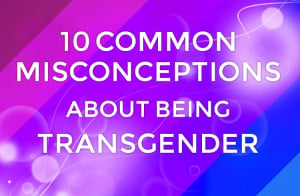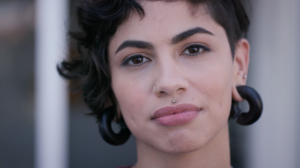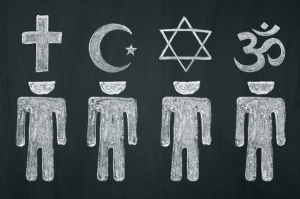
University of Colorado students cheer while listening to Concerned Student 1950 speak on University of Missouri system president’s Tim Wolfe’s resignation. (AP Photo/Jeff Roberson, File)
Since the horrific attacks that happened in France on November 12th, I’ve read an excess of memes – many featuring the smug faces of conservative political pundits – ridiculing and chastising US students of color for protesting institutional, systemic racism at their universities as whining.
These pundits, and the people forwarding their hateful and ignorant remarks, are arguing that the on-campus racism our students are fighting against is trivial and nonexistent in comparison.
While this extremely basic juxtaposition ignores the political massacres that happen in so many other nations – especially those comprised predominately of Black and Brown people, such as Beirut, Mexico, Palestine, Kenya, and the United States of America (don’t tell me you already forgot what happened in South Carolina this summer) – and renders their pain invisible and unsympathetic, this comparison terrifies me for several other critical reasons.
Not only is it disgustingly inhumane and compassionless to commodify the stolen lives of so many people, the pain their loved ones are inevitably feeling, and the fear their neighbors might be experiencing into a weapon with the sole purpose of invalidating and critiquing someone else’s peaceful demands for justice and equality.
But it’s also a terroristic act of political gaslighting.
It tells students of color – and all systemically targeted people for that matter – that if we aren’t being bombed, individually executed, or held hostage, then we aren’t experiencing real violence.
Talk about lowered expectations.
It lets us know just how limited a definition of violence this society has when it pertains to lives of people of color, and insinuates that our requests for safety, equity, and to be treated with dignity and respect are outlandish and inappropriate.
But the most frightening thing is that people don’t seem to recognize the link between these two events.
As atrocious, horrifying, and absolutely wrong as they were, what happened in France weren’t random acts of violence. Those were crimes of desperation and revenge.
Those crimes were the result of the institutionalized, state-sanctioned, culturally validated, and persistent acts of terror against Muslim people in France and around the world.
Those crimes were examples of what happens when oppressed people get tired of fighting against their oppression, burying their murdered, and participating in demonstration after demonstration after demonstration for social justice.
This is the sort of violence that happens when people get tired of the world empathizing with their oppressors, validating their oppression, and telling them that they are not worthy of safety, equity, and being treated with dignity.
While the organizers behind these murders should absolutely be held accountable, the French government (and ours), citizens who participated in the marginalization of ethnically and religiously oppressed groups, and – as hard as it is to say it – individuals who silently and complacently watched the oppression happen are just as guilty.
In other words, if France’s government had decided to proactively work towards centering it’s more politically and culturally targeted residents and eradicating the Islamophobic, racist, and xenophobic violence those people endured on a daily basis, folks around the world would not be rinsing their Facebook profile pictures with the French flag in mourning right now.
The sort of systemic and cultural violence that lead to those attacks are exactly what US students of color, and other radical organizations like #BlackLivesMatter, are working to address and end in the US and abroad with their protests and demonstrations right now, as you read this article.
And it is our responsibility to support them – not just to prevent the deadly political demonstrations that comes from the exhaustion of pervasive oppression – but to actually create a culture and society that is genuinely safe and welcoming for all people, that is not economically dependent on oppressing and marginalizing targeted groups, and that celebrates and affirms solidarity, love, and equality.
But in order to participate in this, we must first stop gaslighting our students of color and other targeted communities when they speak up against their oppression.
We must engage with their requests from a place of curiosity, from a desire to understand, and from a commitment to eradicate racism and other violent systems of exclusion from academic institutions and other hubs of cultural production.
It is in this vein that I’d like to provide just a few examples of some of the ways that I have witnessed anti-black racism and white supremacy in academic spaces – both as an undergrad student, a graduate student, and as a college instructor – that have nothing to do with actual threats against our lives or physical safety.
1. We’re Racially Profiled and Targeted by Campus Security and Police
Just as people of color are significantly more likely to be targeted by supposed enforcers of safety as other, dangerous, not-belonging, and criminal in predominately white communities, they are also similarly profiled by officers on college campuses.
For example, when I was a graduate student, one of my friends – a visibly queer and masculine of center Black woman – was entering campus with a small group of White and Asian friends of hers. As she passed through the gates, campus security called out to one of the White women, asking, “Hey, is that person with you all?” while pointing at my friend.
The White student, by the sheer validity of her whiteness, was deemed safe, trustworthy, obviously a student, and the authority on my friend’s reasons for being on campus.
My friend, however, didn’t even get the dignity of being directly addressed, much less be recognized as a student. As a result, she had to endure the rest of her stay on campus knowing that people in positions of power and authority might assume, based on her appearance, that she didn’t belong there.
Even the pretention of safety and belonging were stolen from her that day – and the rest of us students and faculty of color knew it could happen to us at any time.
That same semester, a Black male instructor was apprehended by campus security, in his own office, and accused of trespassing. When he asserted that he was indeed an instructor, campus security didn’t believe him and continued to hold him captive until a White faculty member validated his position on campus.
Something very similar happened when I was an undergrad at San Francisco State University, only on this occasion, the instructor was physically attacked and arrested.
Not only are we taught that we’re perpetual outsiders institutions, we’re designated as dangerous and unwelcome outsiders.
Being a student and an instructor is exhausting with incessant deadlines, assignments, new information to absorb, diverse relationships to navigate, and financial worry.
The distress of police profiling and harassment on top of those already overwhelming facets of college culture makes safety, survival, and performing a sort of non-threatening friendliness on campus our priority – instead of attaining or providing the education we’re paying for or being paid for.
Hence, access to a complete education, alongside the money we’re paying for it, is being stolen from students of color as a result of systemic oppression. And the peace of mind necessary to be a pedagogically creative and emotionally attentive teacher is what’s stolen from teachers of color.
These are the sorts of instances and institutional responses that lead students of color to leave their institutions and instructors to quit, thus rendering the campus even less diverse and more hostile to incoming students of color.
This is one of the ways systemic oppression is cyclical and pervasive.
2. We’re Chastised for Organizing Against Campus Racism
After the two instances of racial profiling I listed above, plus a multitude that I didn’t list, at Mills College, I attempted to co-organize a town hall for concerned students and instructors to discuss our distress and come up with some solutions.
The days leading up to the meeting, including the night before, I received multiple phone calls from previous professors and administration members beseeching me to stop the meeting.
Some of the messages I received included subtle threats with questions like “But, aren’t you excited to graduate this semester?” or character insults, such as “You know, I never saw you as so hostile and irrational.”
I was accused of attempting to incite a rally, and our meeting was infiltrated by campus deans, department chairs, and other high ranking officers.
Now, while the meeting was open and their presences were absolutely welcome, I use the term infiltrated because they did not come as concerned or curious allies.
Instead, they derailed our conversation with explanations of how people of color are often racist, how the offending officers were just doing their job, and how our meeting was disruptive to campus cohesion.
They were wrong.
Unaddressed and authority-sanctioned racism is disruptive, not the people attempting to eradicate it.
Complaints about racism on Mills campus has happened several times since that event, and there have yet to be the structural changes that students of color have requested.
At other campuses, where students have been vocal about fighting oppression, they received death threats and were the victims to terrorizing acts of vandalism.
As people of color on college campuses, we read about instances like this across the country excessively throughout the semester. We get angry, organize, protest, make a list of demands, and watch our organizing efforts get ignored or invalidated by campus leadership, semester after semester.
When we attempt to follow procedures, play by the rules, and advocate for ourselves, we are ignored, chastised, insulted, gaslit, and victim blamed.
To be told that you are the cause for your oppression, that you won’t be protected by people in position of power, and that you will be persecuted for any self-advocacy work you do, means that safety is not reserved or designated for you on campus – but the potential of danger absolutely is.
3. We’re Assumed to Be Less Intelligent and Have Less Integrity
The first time I ever experienced the sort of interpersonal oppression that I could easily recognize as racism, I was a first-year at my local community college taking Philosophy 101 and in an academic space that wasn’t POC-centered for the first time ever.
It was a week after we turned in our first essay of the semester, and my instructor was reading my essay – in its entirety – in front of the entire class as an example of what an outstanding college paper looked like.
Now, I’ll confess to being a bit of a ham and a major enthusiast for positive affirmation, so I was absolutely ecstatic – for all of five minutes. When she asked the author of the essay to come to the front of the classroom, and I stood up, she crumpled up her eyebrows and told me that she would not tolerate clowning behavior in her classroom.
Confused, I told her that I wrote the essay. She directly accused me of lying. When I stared at her blankly, she asked for my student ID. After proving that the name on the essay and the name on my ID was indeed a match, she asked me to come to her office after class.
I went expecting an apology. Instead, I found myself writing another essay, in front of her, to prove that I was indeed the author of her dearly celebrated paper.
When, to her dismay, she realized that I did indeed write the paper, she excused herself by saying that I looked young and that I didn’t talk or carry myself like someone who would write such a sophisticated essay. I was eighteen.
She never did apologize, and I ended up with a C in her class due to my lack of participation. Unless it was a gym class (I’m morally opposed to increased heart rates and sweat), I’ve never in my life been accused of not participating in school. I love school.
But on this occasion, my instructor was correct: I didn’t participate.
But that was because my instructor created an atmosphere that made it extremely uncomfortable for me – a teenager in a brand new environment – to participate.
Because of how she racialized me, she assumed I was a cheater and a liar rather than a hard working student hungry for her approval and an A. She embarrassed me in front of the entire class and validated her behavior through subtle victim blaming: I didn’t look like someone who could impress her through my writing.
She was not the first or only teacher I’ve had who’ve treated me like that.
Though I fortunately haven’t experienced this as a student since community college, during that time, I had multiple teachers express their inability to reconcile my ability to write with the urban accent in which I spoke.
These instructors made it clear to me that my intelligence, my skill, and my hard work was not anticipated and consequently dubious.
It was a reminder of a message my parents spent a life time telling me – that as a Black woman, I’d have to work three times as hard as everyone else.
And it was clear to me that my role in the institution, at least at that time, wasn’t to actually acquire new information or skills – it was to prove to my instructors and classmates that I actually belonged in that space, time and time again.
And this is an unfortunate experience that people of color face, as students and instructors, on college campuses in the states.
4. Programs That Center Our Needs and Experiences Are Deemed Racist by White Faculty and Students
Sometimes this comes in the form of arguing against affirmative action programs. Sometimes it looks like a protest against a cultural holiday, or campus organization, or even a counter-protest against the self-advocacy work done by students of color.
When I was a community college instructor, I taught in an English program that developed a restorative justice curriculum centering the experiences, literature, and academic needs of Black, Asian, and Latinx students.
Part of the program’s goal was to decrease the number of students of color on academic probation, increase their matriculation rate, and to create a space where they could thrive while still being themselves (instead of having teachers who assumed they were less intelligent – like some of my earlier ones).
We had outstanding success rates, our students really enjoyed their experiences, I loved teaching them, and I’m currently writing letters of recommendation for former students to attend graduate school.
On top of that, at a school that sorely lacked diversity in their English Department (there was only one full time English instructor of color on faculty), our program was initially staffed entirely by teachers of color.
We loved and supported each other in the process of loving and supporting our students. But outside of class, it was a struggle every day.
We would catch White faculty members ripping down our flyers and putting them in the trash can. Students of all different ethnicities would enroll in our program, fall in love with us, and then confess that other English teachers told them to take our classes to find instances of “reverse racism” and report us.
They attempted to create rules stating that we, instructors, had to get our lesson plans approved by the department chairs every day. When that request was deemed inappropriate by both the Dean and the Vice President, they proposed having our students take additional standardized tests to prove that we were actually teaching them what the school required.
These instructors did everything they could to dismantle our program – which meant blocking access for students of color, decreasing career opportunities for instructors of color, undermining our authority and respect amongst students, teaching our students that they didn’t deserve academic experiences that centered around their cultures and needs, and creating an incredibly unsafe and hostile environment for us and other teachers of color.
Because of these teachers, I could never feel safe and secure in my job. Further, bracing myself for their regular attacks meant that I had less energy to devote to nurturing and caring for my students the way I wanted.
On top of that, these teachers let us know just how drastically they supported a campus culture that wasn’t just exclusive to students of color, but that they were willing to devote an intense amount of energy to standing in the way programs devoted to their success.
5. White Teachers Are Often Afraid of Us – And Not Accountable to Their Fear
Before I was hired as an instructor, I interned at three different local community colleges to gain experience and visibility. When I met the program chair of the first English program and told her I wanted to teach, her immediate response was, “Thank God! We need you.”
I was immediately flattered (remember: I have a thing for positive affirmation), but confused to what she meant given that we had not yet had an interview and she knew absolutely nothing about me other than the fact that I was a graduate student interested in teaching.
So I asked her what she meant. And she said, “It’s just that our Black female students really need a role model. They challenge everything I say and make my classroom so hostile.”
I was at a loss for words, so I smiled and nodded just the way my mom taught me to when someone says something out of pocket and I’m not in a place to challenge them. But she told me so much with that statement – so much that I was extremely disheartened to hear from another teacher.
Instead of taking a second to assess why her classroom wasn’t serving her or her students, she placed the onus of blame on them and hid behind the word that every assertive Black woman gets called when she expresses any form of dissent or discontentment: hostile.
“Hostile” is a code word for violent, uncivilized, unruly – which is the same sentiment that US institutions have been using to validate the degradation and oppression of people since our countries inception.
Calling us hostile is a great way to disengage from acknowledging our humanity or engaging with us from a place of compassion, curiosity, empathy, or advocacy.
By calling her Black students’ self-expression “hostile” when they were issuing complaints or dissatisfaction, she let me know very clearly that she was unable and unwilling to engage with her student’s complaints accountably, that she hadn’t taken the opportunity to learn their communication style, and that she’d rather project moralistic tropes on them than actually do the work to understand their dissatisfaction.
Which is super problematic and xenophobic given that different cultures are taught to communicate differently, and not everyone has had enough access to middle class, White, US American English (also called standard English) to know how to code switch or assimilate.
She let me know she was afraid of her students, felt inefficient to support them, and assumed that I’d immediately understand and resonate with them because of our shared Blackness – which makes sense given that Black people, like other ethnic minorities in the US, are absolutely a monolith.
As a former nerd and teacher groupie, I felt intensely betrayed. As a Black woman invested in the safety and healing of all people, I felt terrified.
If your teacher is afraid of you, that means it’s highly unlikely for them to have any empathy or compassion for your experience or needs – which is extremely problematic when you have multiple marginalized and targeted identities that might get in the way of your success in traditional academic culture.
It means you, your autonomy, and your vulnerability are invisible behind your instructor’s prejudice and ignorance.
This is the kind of fear that allows systemic oppression and exclusion to be so pervasive.
***
It’s impossible to feel safe on campus when you’re simultaneously feared and criminalized, when you’re penalized and threatened for advocating for yourself, when your instructors and colleagues believe the worse of you, and when people claim that the harm you endure isn’t valid because you aren’t being shot.
While none of the above events actually presented a physical threat to me on campus, they were all symptoms and components of systemic violence that absolutely targets and harms Black students and faculty members.
And they made school a frequently terrifying, distressing, and extremely unsafe space for me and so many others – even as I tried to pretend like that wasn’t the case.
I hated the pervasive white supremacy that I had to expose myself to in order to be a student and later a teacher, that I was expected to either fight at all times or assimilate into, that I was constantly striving (and failing) to protect my students from, and that was fiercely eating away at my love for academia and sometimes life.
And while school should not be a place that threatens your love of learning and life, that’s what it means to be a Black person in an institution fiercely committed to maintaining its white supremacist foundation, principles, and hierarchal structures.
While Black people are not being bombed and shot on campuses in the US in the ways the people of Beirut and France recently were, we are still enduring a violence that is very real and that must be addressed, by people in positions of privilege, immediately.
We cannot continue to blame our oppressed citizens for their oppression. We cannot continue to allow our governments, our institutions, and our privileged to violate us and then punish us for responding appropriately.
The only way to end violence is to end it at the systemic level – and that applies to the French government and US institutions.
[do_widget id=”text-101″]
Vanessa Rochelle Lewis is the Senior Editor at Everyday Feminism. She is a queer, lush-bodied, Black, femme performance artist, writer, actress, educator, and Faerie Princess Mermaid Gangsta for the Revolution. She loves romantic songs, romantic films, romantic books, romantic conversations, romantic friendships, and writing long, vulnerable Facebook statuses (about romance). Speaking of Facebook, please add her here.
Search our 3000+ articles!
Read our articles about:
Our online racial justice training
Used by hundreds of universities, non-profits, and businesses.
Click to learn more




















